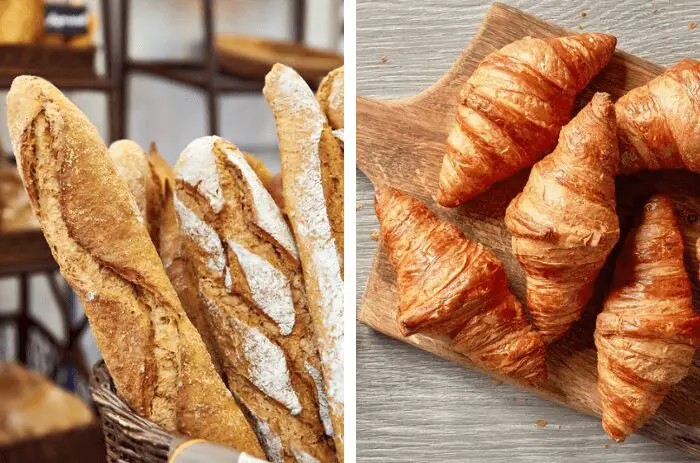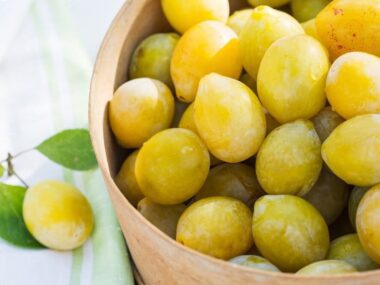So, you’ve strolled into your favorite bakery, gazing at the mouthwatering spread of baked goods, and you’re faced with a delightful conundrum – do you go for that hearty loaf of bread or indulge in a decadent pastry? Let’s dive into the delectable world of baked goods, exploring the Difference Between Bread And Pastry. Buckle up, because we’re about to embark on a delicious journey.
Ingredients – Bread: The Basics
When it comes to bread, simplicity is key. The ingredients list reads like a minimalist’s dream. Flour, water, salt, and yeast or leavening agents – that’s the bread equation. You won’t find fancy additions or secret ingredients here. It’s all about the basics.
Now, let’s get into the nitty-gritty. The flour used for bread is typically high in protein, such as the trusty bread flour. This protein content is the secret to the magic of bread – it’s what creates that gluten web. When mixed with water, gluten is born, and it’s this protein network that gives bread its structure, chewy texture, and elasticity.
Ingredients – Pastry: Adding the Magic Touch
Ah, the pastry dough – it’s where the magic happens. Pastry dough starts with flour, sure, but it takes a detour into the world of fat. Butter or shortening join the party, along with a pinch of salt and a touch of liquid, usually water or milk. It’s the fat that makes all the difference.
The fat in pastry dough plays a dual role. First, it acts as a barrier between the flour and water, making sure gluten doesn’t get too cozy. This is the key to that tender, delicate texture we all love in pastries. Second, fat brings flavor. Whether it’s the rich indulgence of butter or the crumbly delight of shortening, the type of fat used can completely transform the taste and texture of your pastry.
Dough Preparation – Bread: The Strength Workout
Bread dough is not for the faint of heart. It’s a workout in itself. You’ll see bakers mixing it with vigor, kneading and working the dough to develop that gluten. Kneading is like a CrossFit session for dough – it involves folding, pressing, and stretching to create those gluten strands. This intense exercise results in a dense, chewy texture in your finished bread.
Dough Preparation – Pastry: Handle with Care
Pastry dough, on the other hand, is a delicate diva. It’s all about gentle handling. You mix it just until it comes together, and then it’s off to be rolled out or shaped according to your pastry dreams. This gentle treatment ensures that gluten doesn’t throw a party, keeping your pastry tender, flaky, and melt-in-your-mouth.
Texture – Bread: The Hearty Chew
The texture is where bread and pastry really part ways. Bread is all about that hearty, robust chew. Remember the gluten we talked about earlier? It’s the reason behind that dense, chewy structure. Bread dough is leavened with yeast, which ferments the dough, producing carbon dioxide gas that makes the bread rise. The gluten traps the gas, creating those air pockets that result in the characteristic crumb and chewiness of bread.
Texture – Pastry: Light as a Cloud
Now, when it comes to pastry, think light as a cloud. The higher fat content in pastry dough is the game-changer. It prevents gluten formation and creates layers in the dough. These layers are what give pastries their delicate, crumbly texture when they meet the heat of the oven. The layers of fat also create pockets of air, contributing to that light and flaky texture. Croissants, puff pastry, and pie crusts are prime examples of pastries that embody this lightness.
Flavor – Bread: The Versatile Canvas
Bread has its own charm when it comes to flavor. It’s like a versatile canvas ready to be painted with different tastes. Typically, bread itself is neutral or slightly salty. The real flavor comes from the crust and the crumb. The long fermentation process in bread-making adds layers of complexity. Depending on the type of bread and the ingredients used, you can taste hints of sweetness, acidity, or nuttiness.
Flavor – Pastry: Indulgent Delight
Pastries, on the other hand, are all about indulgence. That extra fat in pastry dough, often from butter or other fats, is like a symphony for your taste buds. It’s rich, buttery, and absolutely divine. Pastries don’t stop at butter; they often get a sweet makeover with sugar and a variety of flavorings – spices, extracts, and fillings. From sweet pastries like cinnamon rolls to savory options like quiches, the world of pastries is a playground for flavor experimentation.
Uses – Bread: The Meal Staple
Bread is the unsung hero of many meals. It’s the cornerstone of sandwiches, the partner for spreads, and the base for burgers. It’s versatile, making appearances in croutons, breadcrumbs, and stuffing. Plus, it’s the trusty vehicle for dips, spreads, and toppings. Bread doesn’t just sit on the sidelines; it’s an essential player.
Uses – Pastry: The Dessert Darling
Pastries, well, they have a different role to play. They’re the darlings of dessert, breakfast, and snacks. Sweet pastries, with their cakes, cookies, and fruity fillings, are your go-to treats. Breakfast pastries like croissants and muffins make your mornings delightful. And don’t forget the savory pastries – quiches, pies, and turnovers – perfect for appetizers, snacks, or light meals.
Cultural Influences – Bread: A Global Staple
Bread is a global star. It’s a staple in many cultures, carrying centuries of history and tradition. It has taken on unique forms, shapes, and flavors across the world. Think about the French baguette, Italian focaccia, Indian naan, and Mexican tortillas. Each has its own distinct personality, reflecting the cultural influences it has embraced.
Cultural Influences – Pastry: European Elegance
Now, pastries have a more European affair. Classic French pastries like croissants and macarons are renowned worldwide for their delicate flavors and exquisite textures. Danish pastries, with their layers and sweet fillings, have graced breakfast menus around the globe. British pastries like scones and mince pies are beloved in the UK and beyond. Eastern European countries bring their unique twists with strudels, kolaches, and piroshki, all deeply rooted in their culinary heritage.
Conclusion: Savor the Differences
In the grand tapestry of culinary delights, bread and pastries each have their unique threads. Whether you’re biting into a warm slice of bread with butter or savoring the decadence of a beautifully crafted pastry, there’s a world of difference to appreciate. Understanding the Difference Between Bread And Pastry enriches your journey through the art and science of baking and enhances your enjoyment of these beloved treats.
So, the next time you stand before a bakery’s tantalizing display, take a moment to appreciate the nuances between bread and pastries. From their humble beginnings to their role in shaping our daily rituals and special occasions, both are cherished and beloved. They are, after all, more than just food; they’re a testament to the art of baking and the pleasure of savoring life’s simple joys.



